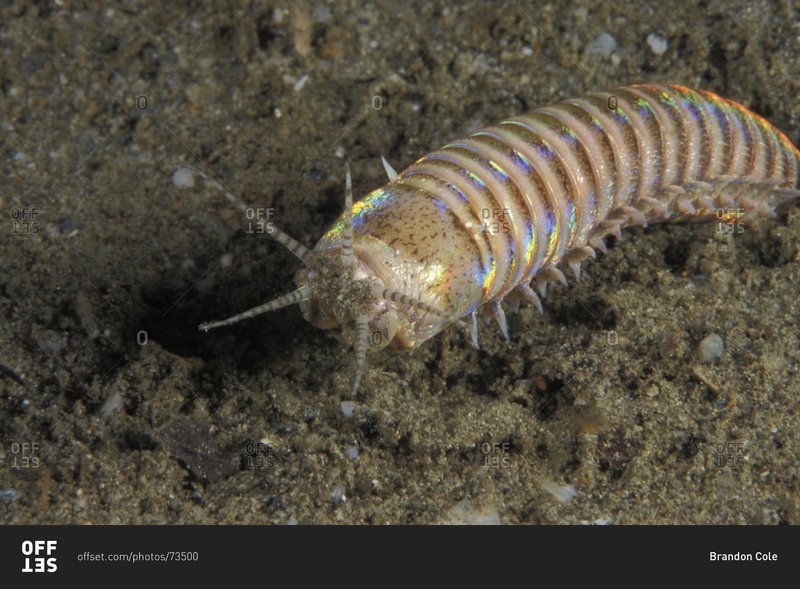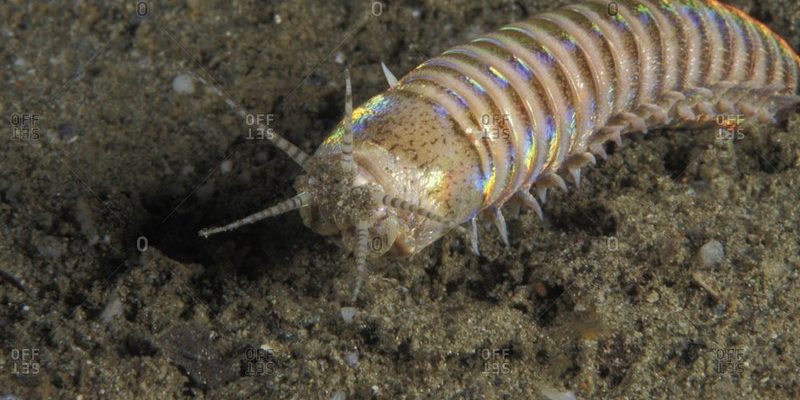
Let’s dive into the world of bobbit worms! You might be surprised to learn that they have some unique habits and adaptations that allow them to thrive in their sandy homes. Whether you’re a marine enthusiast or simply curious about these underwater wonderers, understanding how deep bobbit worms burrow can shed light on their role in the ecosystem and how they interact with their environment.
What Are Bobbit Worms?
Bobbit worms, known scientifically as *Eunice aphroditois*, belong to a group of marine worms called polychaetes. These creatures are fascinating not just because of their size—some can reach up to 10 feet long—but also due to their predatory skills. They have long, segmented bodies that are often a striking shade of green or reddish-brown, adorned with bristles that help them navigate their sandy habitats.
These worms are somewhat like hidden predators of the underwater world. They burrow into the sand or mud on the ocean floor, leaving only their distinctive heads exposed, which resemble a bunch of vibrant antennae. This camouflage allows them to surprise unsuspecting fish or crustaceans that swim too close. It’s an incredible adaptation that showcases how evolution has finely tuned these creatures to survive and thrive in their environments.
How Deep Do Bobbit Worms Burrow?
You might be wondering just how deep these elusive creatures go into the sand. Bobbit worms typically burrow about **3 to 4 feet deep** into the seabed, although reports suggest they can dig even deeper in some cases. Their burrows serve as protective homes, keeping them safe from predators and harsh environmental conditions.
The depth at which bobbit worms burrow can depend on various factors, including the type of sediment, the availability of food, and even the presence of other marine life. In sandy substrates, they often find it easier to create longer, more complex burrows, allowing them to expand their living spaces and increase their chances of catching prey.
Why Do Bobbit Worms Burrow So Deep?
Burrowing deep into the sand offers bobbit worms several benefits. First and foremost, being buried helps them stay hidden from predators. By creating a network of tunnels, bobbit worms can avoid detection while waiting for fish or other marine animals to pass by. Once their prey is close enough, they strike with lightning speed using their powerful jaws.
Additionally, burrowing deep allows these worms to tap into a food source that many other creatures might not reach. As organic material breaks down in the ocean floor, bobbit worms have access to nutrients that are vital for their survival. This strategy not only enhances their diet but also increases their chances of thriving in competitive environments.
How Do Bobbit Worms Create Their Burrows?
Creating a burrow is no small feat, and bobbit worms have developed unique techniques to do this effectively. They use their strong, segmented bodies to push through the sediment and generate a space where they can comfortably reside. As they dig, they often utilize their bristles to help anchor themselves and prevent collapse.
The worms’ burrowing technique involves a combination of **mechanical force** and **chemical reactions**. They can secrete mucus that helps keep the walls of their tunnels stable, which is essential in softer sand. This adaptability helps them maintain their burrows over time, allowing them to thrive in various marine environments.
Bobbit Worms and Their Ecosystem
Bobbit worms play an important role in their ecosystems. By burrowing deep into the sand, they contribute to nutrient cycling, helping to break down organic materials. This process enriches the sediment, making it more fertile for other marine life.
Their presence can also indicate a healthy marine environment. A good population of bobbit worms often means the sand contains sufficient organic material and that other organisms are thriving. In this way, they serve both as predators and prey, contributing to the balance of the underwater food chain.
Protecting Bobbit Worms
While bobbit worms are fascinating creatures, they face threats from changes in their environment. Factors like overfishing, pollution, and climate change can impact their habitats and food sources. You can help protect these amazing worms by supporting efforts to maintain healthy ocean ecosystems, such as sustainable fishing practices and coastal conservation projects.
Engaging in ocean clean-up efforts and advocating for marine protection policies are simple ways we can contribute. Every small action counts in preserving the delicate balance within marine ecosystems that allows creatures like bobbit worms to thrive.
Understanding how deep bobbit worms burrow in the sand gives us insight into their unique adaptations and roles in marine ecosystems. These incredible creatures, with their vivid colors and remarkable hunting skills, remind us of the wonders of ocean life. By appreciating and protecting the environments they live in, we help ensure that these fascinating worms—and countless other marine species—continue to flourish beneath the waves. So the next time you think about the sandy ocean floor, remember the hidden bobbit worms and the important role they play in the great underwater tapestry of life.

